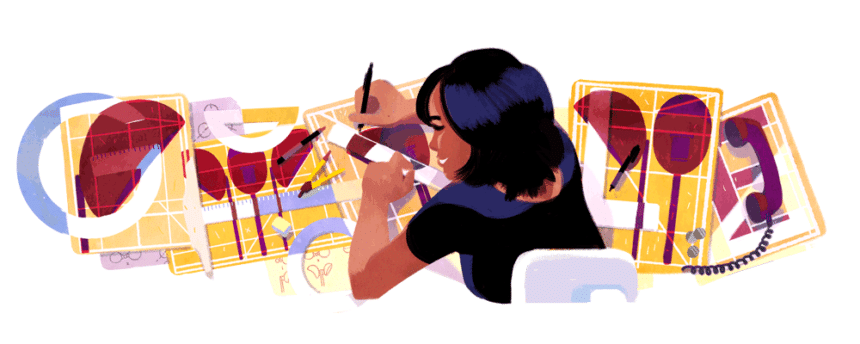Image Courtesy: Google Doodle
Chu Ming Silveira (4 April 1939 – 18 June 1997) was a Brazilian architect and designer, and creator of the Orelhão telephone booth.
Life and Career
Chu Ming Silveira was born in Shanghai on 4 April 1941. Her father was a civil engineer who served in Chiang Kai-Shek’s Nationalist military against the Communists during the Chinese Civil War. After the Communist victory in 1949, her family faced violent persecution and repression for being on the Nationalists’ side, which led her father to move the family to Hong Kong, where they stayed for a few months in hopes of eventually making it to America.
In 1950, her family traveled from Hong Kong to Brazil on a three-month long voyage by ship. They initially arrived in Rio de Janeiro, then settled down in São Paulo, in the Bairro Pinheiros. Once in Brazil, Chu Chen and Shui Young Queen decided to baptize their children as Catholics with Western names. At the age of 9, Chu Ming was christened as Veronica. Chu Ming attended Mackenzie University, in São Paulo, and graduated with a Master’s degree in Architecture in 1964.
Chu Ming Silveira, an architect, answered her country’s call to design a better payphone booth. Durable yet lightweight, and inexpensive to manufacture, install, and maintain, her Orelhão has become one of the country’s most recognizable and beloved pieces of “street furniture.”
Orelhão, which is Portuguese for “big ear,” shelters callers from Brazil’s baking sun and torrential downpours, as well as a wide range of temperatures. Best of all? Callers can actually hear the person on the other end of the line. Chu Ming drew her inspiration from the shape of an egg, which provides excellent acoustics and has a pleasing natural form.
There are more than 52,000 Orelhão in Brazil today, and adaptations of Chu Ming’s design can be found in Peru, Colombia, Angola, Mozambique, and China.
She died on 18 June 1997 in São Paulo, Brazil.
Famous Works
Chu Ming Silveira created two designs for telephone booths that would meet all these requirements. Known as Chu I and Chu II, named so by the CTB in her honor, and popularly known as orelhinha, “little ear”, and orelhão, “big ear”, these designs consisted of an egg-shaped booth surrounding a telephone located at the center. The egg shape of Chu Ming’s design allowed it to reflect most external noise and made the conversation converge towards the center of the parabola, where the user’s ear is located, reducing interference. This design successfully minimized the space that the phone booths took up without compromising the sound quality users experienced, making them a huge success.
Award and Legacy
Chu Ming Silveira created two designs for telephone booths that would meet all these requirements. Known as Chu I and Chu II, named so by the CTB in her honor, and popularly known as orelhinha, “little ear”, and orelhão, “ear”, these designs consisted of an egg-shaped booth surrounding a telephone located at the center.
There are more than 52,000 Orelhão in Brazil today, and adaptations of Chu Ming’s design can be found in Peru, Colombia, Angola, Mozambique, and China.
On 4 April 2017, Google celebrated Chu Ming Silveira’s 76th Birthday with a doodle.

